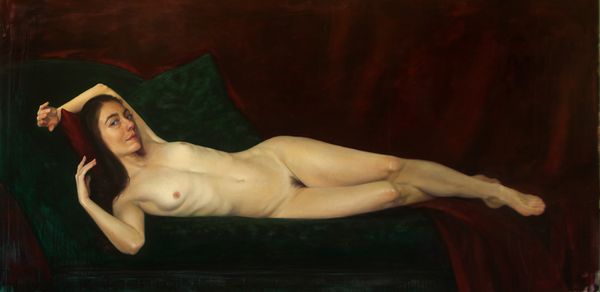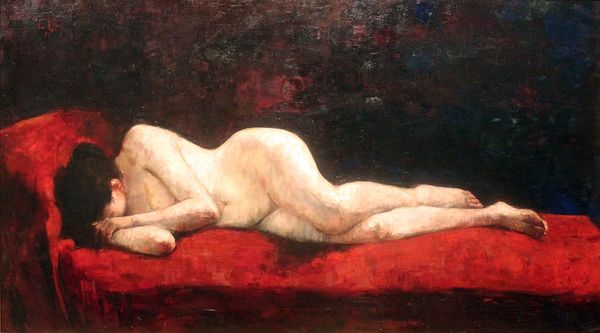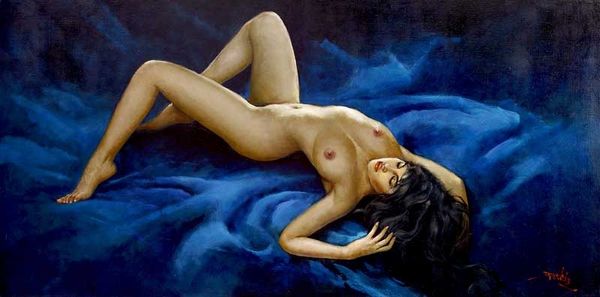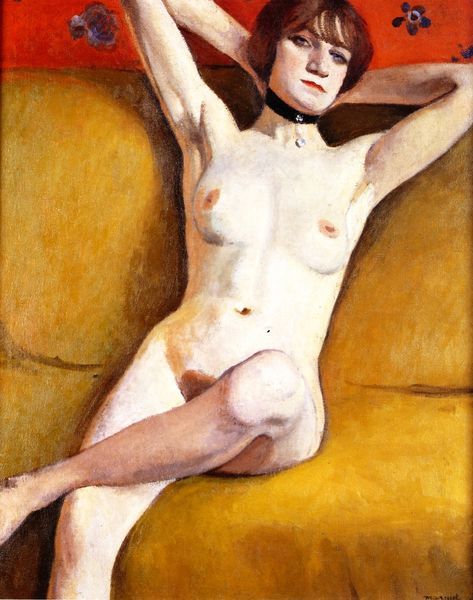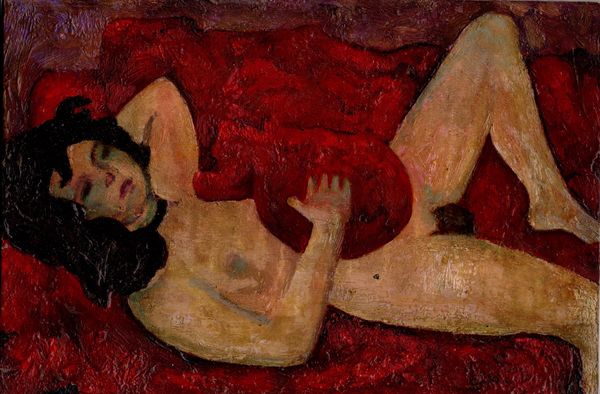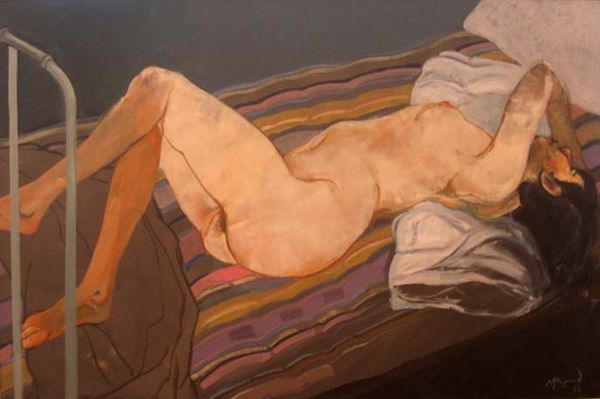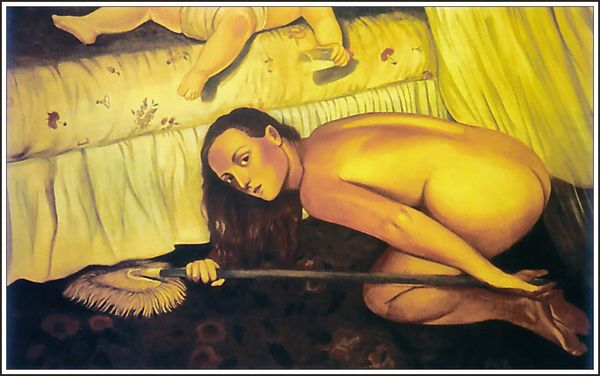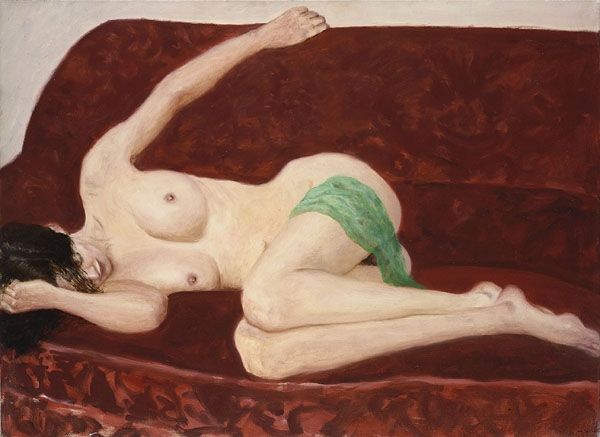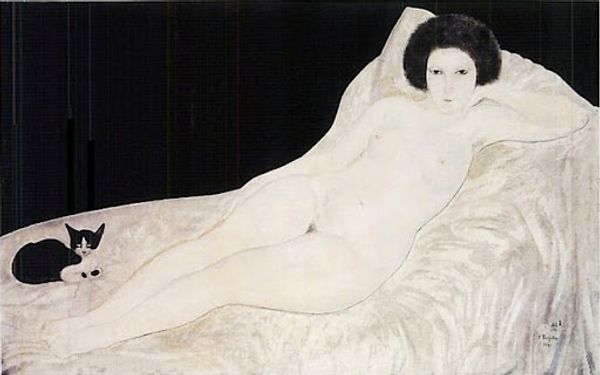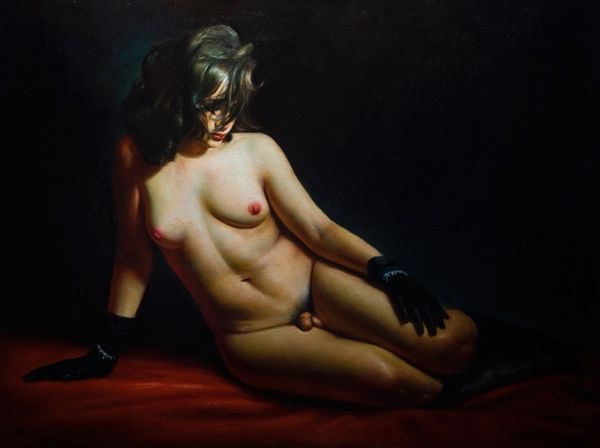
oil-paint
#
portrait
#
oil-paint
#
fantasy-art
#
figuration
#
neo expressionist
#
neo-expressionism
#
nude
#
surrealism
Copyright: Ernst Fuchs,Fair Use
Ernst Fuchs’s “Nymph Grammophone” from the Lohengrin Cycle, is a painting with a slippery surface, alive with process. Fuchs works the paint in thin, transparent layers, like glazing techniques, but look closer and you see the visible brushstrokes, each one a deliberate decision. The nymph’s skin is a ghostly blue, an unnatural hue that feels both ethereal and unsettling. Her hair, a fiery red, provides a stark contrast, drawing our eye to her face. Notice the way Fuchs renders the fabric of the chaise lounge, thick with impasto and swirling patterns. The texture is rich, almost sculptural, inviting us to touch. Look at the legs of the chair, a series of thick red lines, somehow both decorative and grotesque, like dripping blood. These tactile elements heighten the dreamlike quality of the painting, creating a space where beauty and strangeness coexist. This piece reminds me of Gustave Moreau's decadent Symbolism, art that also embraced the bizarre and the beautiful, challenging our perceptions of reality. Like those painters, Fuchs isn't after definitive answers, but instead embraces ambiguity, leaving us to wonder what lies beneath the surface.
Comments
No comments
Be the first to comment and join the conversation on the ultimate creative platform.


